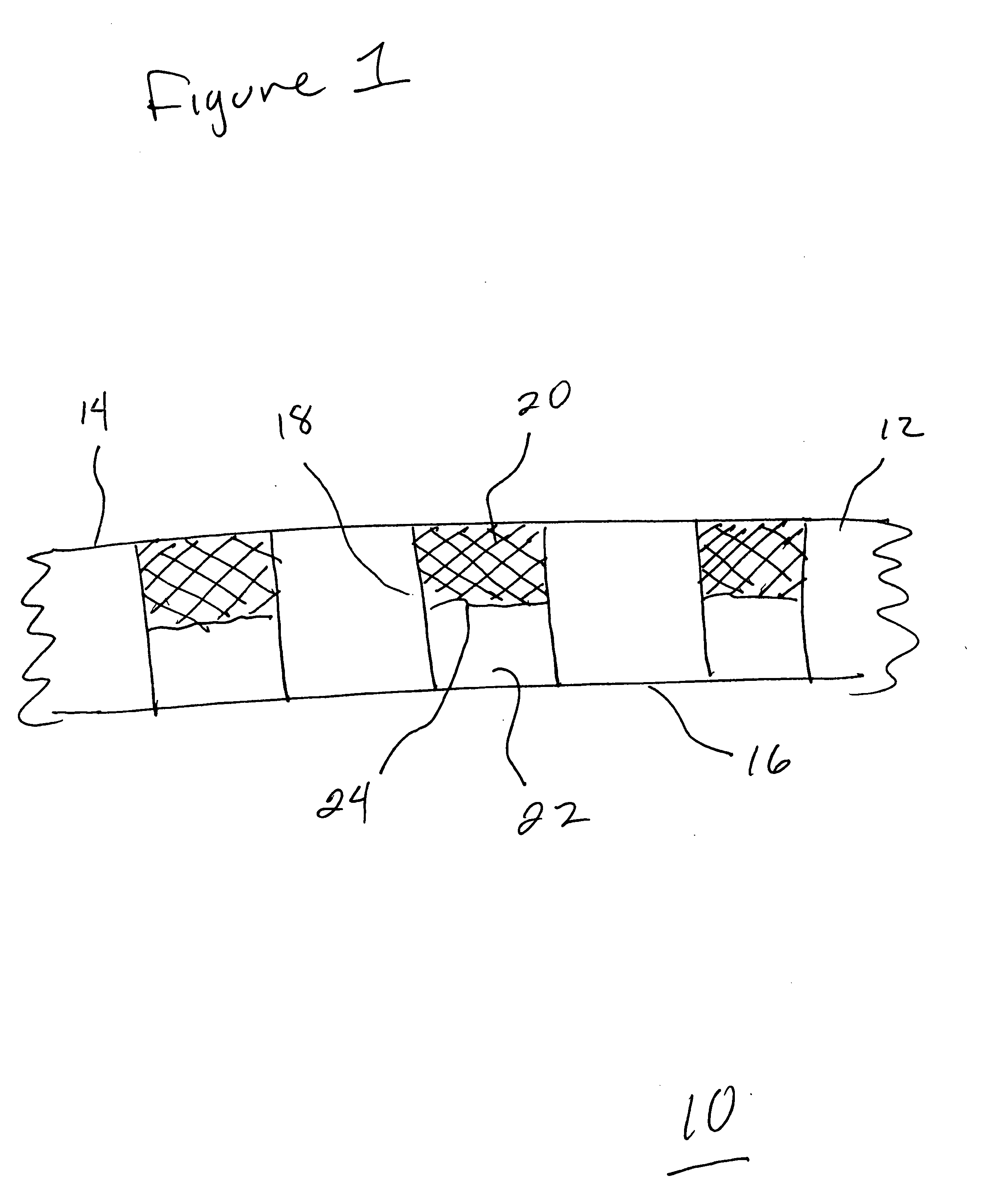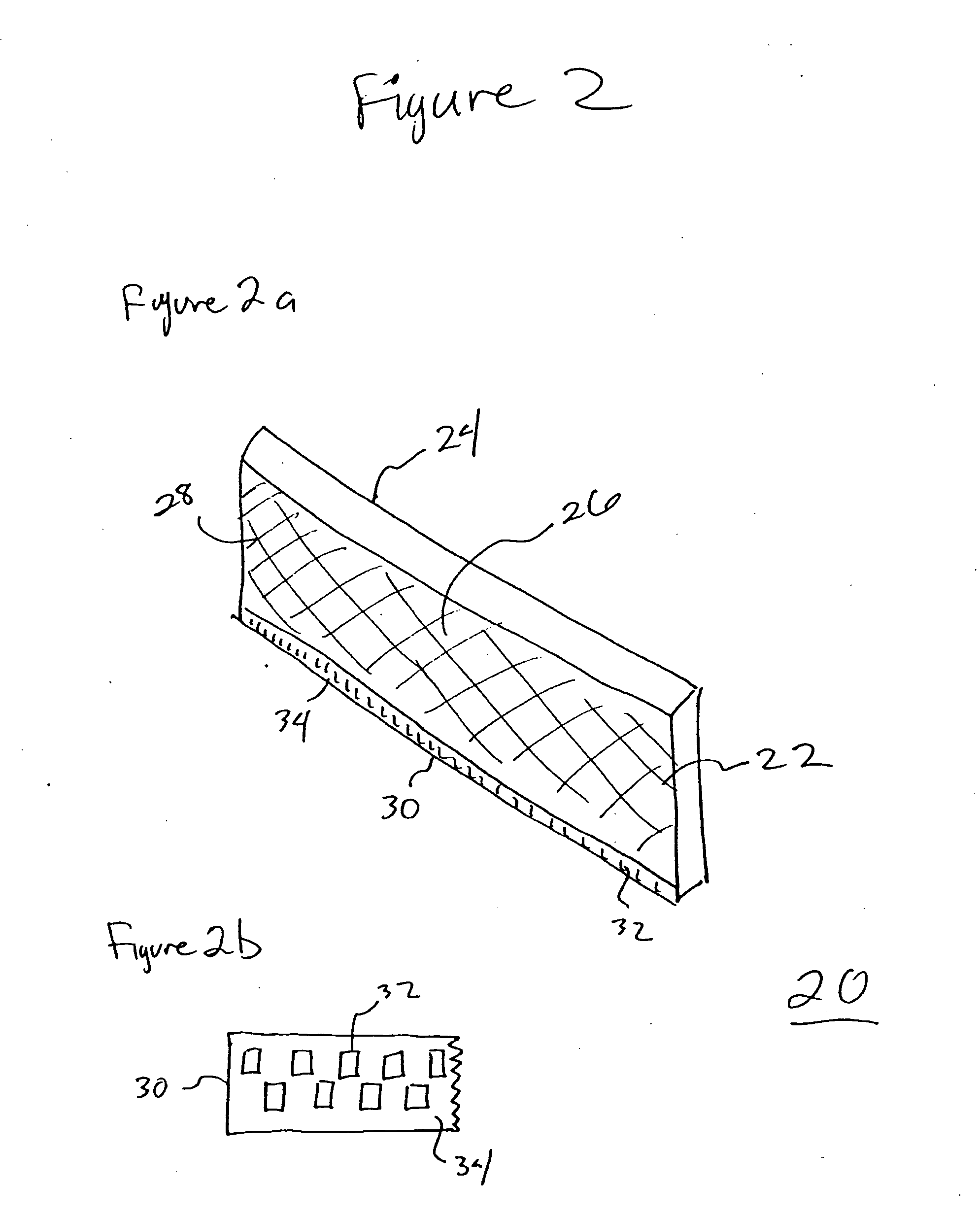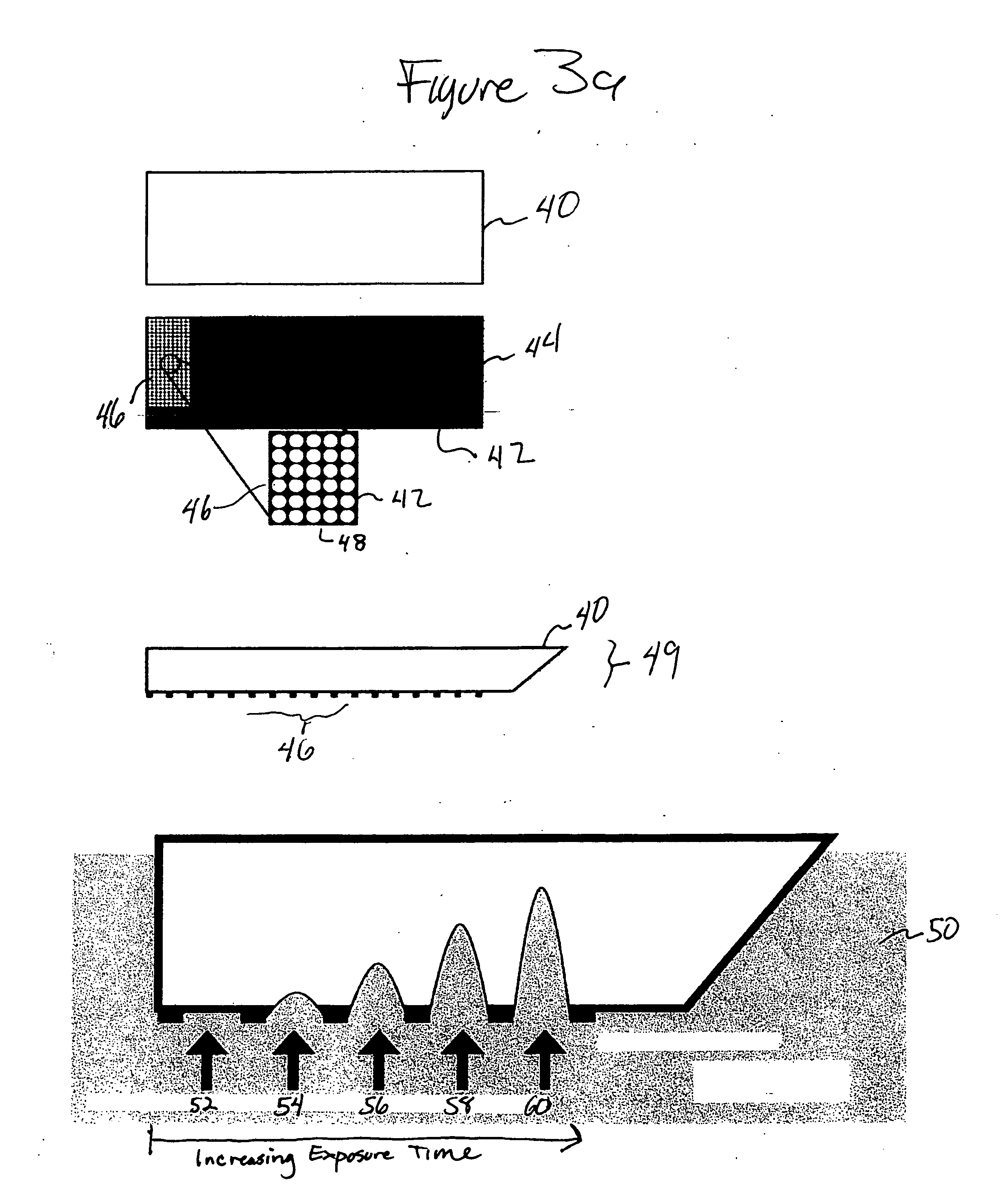Addressable microarray device, methods of making, and uses thereof
a microarray and device technology, applied in the field of microarrays, can solve the problems of large amount of time and resources, and the choice of probes is theoretically limited, and achieve the effect of reducing the number of microarrays
- Summary
- Abstract
- Description
- Claims
- Application Information
AI Technical Summary
Benefits of technology
Problems solved by technology
Method used
Image
Examples
example 1
Production of a Substrate having an Array of Microwells
[0101]FIGS. 3a and 3b illustrate one method of producing a substrate having an array of microwells according to an embodiment of the invention. In the first step, a suitable substrate 40 is provided. Second, a mask is applied to the a side of the substrate. A mask 42 is applied to a second side 44 of the substrate 40. The mask 42 contains a plurality of openings 46, further illustrated in a expanded window 48, which selectively allows exposure of the second side 44 of the substrate 40 to an etchant. A side view 49 of the substrate illustrating the openings of the mask is shown. Next, the substrate 40 is at least partially immersed in an etching bath. The etchant contacts the substrate areas not covered by the mask, thereby removing substrate material and forming cavities at openings 52, 54, 56, 58, 60 in selected areas. FIG. 3a shows exposure for increasing amounts of time and illustrates that the degree to which the substrate ...
PUM
| Property | Measurement | Unit |
|---|---|---|
| size | aaaaa | aaaaa |
| size | aaaaa | aaaaa |
| size | aaaaa | aaaaa |
Abstract
Description
Claims
Application Information
 Login to View More
Login to View More - R&D
- Intellectual Property
- Life Sciences
- Materials
- Tech Scout
- Unparalleled Data Quality
- Higher Quality Content
- 60% Fewer Hallucinations
Browse by: Latest US Patents, China's latest patents, Technical Efficacy Thesaurus, Application Domain, Technology Topic, Popular Technical Reports.
© 2025 PatSnap. All rights reserved.Legal|Privacy policy|Modern Slavery Act Transparency Statement|Sitemap|About US| Contact US: help@patsnap.com



